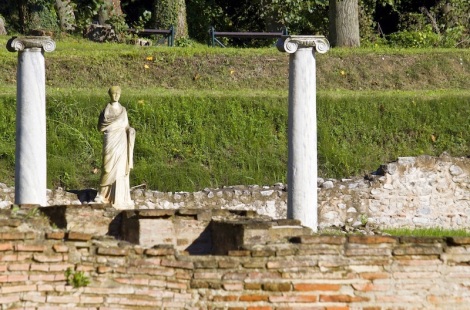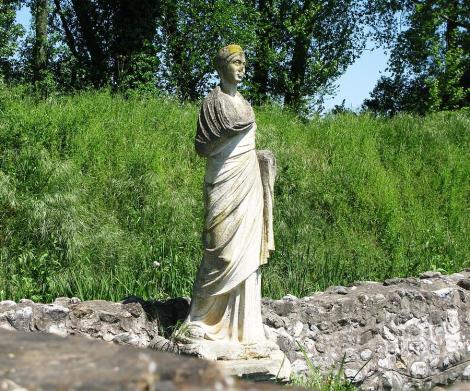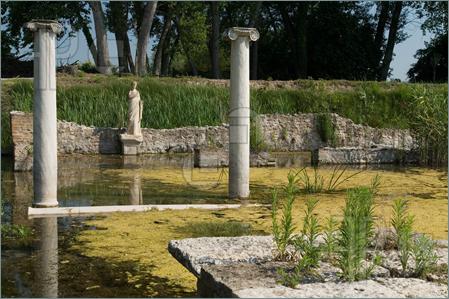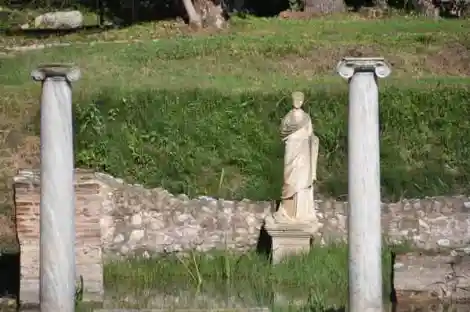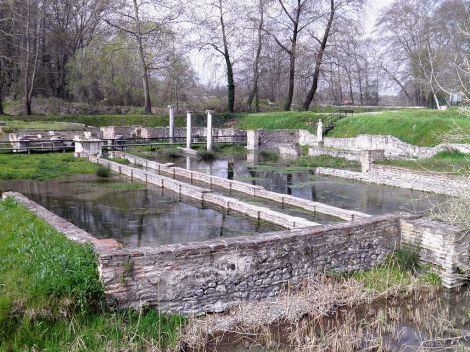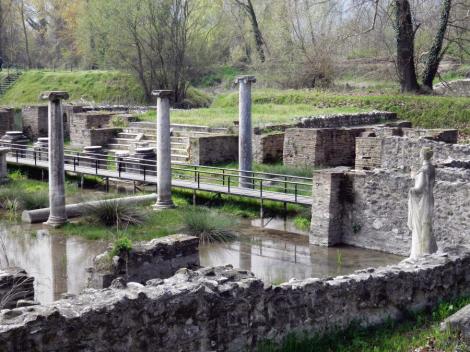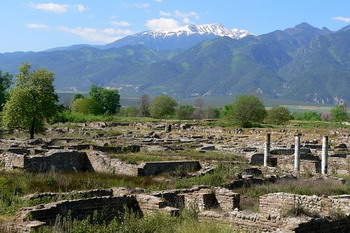It was in the summer of 1980, the year that I remember as “the year of the Greek Journey”. My family had planned a Greek Tour of almost one month, during which we visited some of Greece’s most important archaeological sites, met with friends, delighted in the fabulous beauty of this country, indeed blessed by the Gods. My soul, my heart, my mind were touched in the most profound way by this journey, which imprinted Ellada in my being forever. For some people, a two-thousand-year old site is just a pile of old rocks, boring and useless to our “modern” life. For the adolescent that I was in that moment, it was a revelation! I found myself walking in Delphi, in Olympia, in Corinth, speechless, breathless, troubled by the deep emotion, unable to hold my tears… History was coming to life in front of my eyes, thousands of years were suddenly not lost, but found again, all those old rocks were telling their stories, sending vibrations that were as much alive as I was… and the place where I felt this in the most powerful way was Dion!
Macedonia was the last part of our Greek Journey, we visited Pella and Vergina, and then Ellada rewarded our love for her with the most wonderful gift: our parents had friends who had friends, and so we were offered the chance to visit the archaeological site of Dion, not open to the public at that moment. One day before our scheduled visit, a major discovery was headlines in the Greek newspapers: a statue had been uncovered from the mud, in almost perfect state. … Now, as I write, my mind plays back that day as if it was yesterday, the heat, the dust under our feet as we walked through the site, in astonishment… piles of old stones here and there, pieces of coloured, beautiful mosaic waiting to be put together again, after almost two thousand years … the emotion of literally walking through History, one step, then another one…
… and then I saw her. She was lying on the ground, in front of the Museum building (which had been arranged as a storage place for the excavated objects). She was almost intact, almost unharmed by the fall into oblivion for so such a long time, only the nose and hands were broken. She wasn’t clean, as the statues in the museums, but more beautiful than all the statues I had ever seen, because on her body, on the folds of her clothes, there was the dirt of history, of the thousands of years spent in the dark. A woman archaeologist was cleaning her, using water and a brush, with gentle, almost affectionate gestures. The emotion I felt was overwhelming, there was no way I could even try to express it… There, on the ground, in the dust, she was incredibly, magically, breathtakingly beautiful! We weren’t allowed to photograph her, but the “official” picture appeared in next day’s papers, together with details of the discovery, and images of the area where she had been found. It was a muddy area, due to the waters that cover a part of the archaeological site, making it difficult for the scientists to work on excavations and the preserving of the site. When I reached that muddy area I stopped, just like I had done in front of the statue, and simply stayed there for some time, wonder-struck, in fascination and disbelief: on the surface of the muddy water, marble capitals seemed to float… the archaeologists had worked hard on draining that part of the site, and the underground world was starting to appear! Dazzled, in awe, I was looking at the three capitals, and my imagination was descending on the layers of history, following the majestic pillars down, in the water, where they had stood for all that time, together with the statues, remnants of the great city destroyed by nature’s forces!
I believe that there, at Dion, in that moment of grace, Ellada became a part of me for ever… the image of the beautiful statue lying on the ground, so close to me, the image of the marble capitals crowning the pillars still hidden from my eyes, all this moved me so deeply that when I left I took them with me… and although I was very young, I realized that in those moments a “coming back” had taken place, a rediscovery, of a place, of a time, of a way… and from then on, from that incredible Greek Journey of 1980, each passing year only deepened my feeling that between me and Greece there is a profound, powerful, magical connection which cannot be explained, cannot be put in words, it can only be felt in my soul – always, and forever, connected to Her soul…
Dion – Statue of Goddess Isis
(the statue exposed on the site is a copy, the original – the one I have seen – is in the museum)
Ancient Dion – The Sanctuary of Goddess Isis
The Sanctuary of Isis, Ancient Dion, Greece
“Near the Vaphyras river, the ancient people of Dion built a sanctuary devoted to Aphrodite and Artemis. In the 2nd century B.C., Artemis was succeeded by Isis, an Egyptian goddess, whom Alexander the Great held in the highest esteem. He had the sanctuary rebuilt to honour her, apparently while he was in Egypt. Most of the visible ruins seen today date back to the 2nd century AD, with older remains underneath. Multiple inscriptions and statues in the sanctuary date to the Hellenistic period.
The elongated pathway flanked by low walls presumably symbolizes the Nile, the sacred river of Egypt. The two marble bulls on the steps of the central altar depict the Egyptian god Apis.
The Isis festival took place every spring and autumn. During that time, the area outside the sanctuary walls flooded with villagers, craftsmen, and merchants who sold animals, gold and silver artefacts, and a wide variey of merchandise. However, only the initiated pilgrims could enter the sanctuary, where they spend the night waiting for the great goddess to visit their dreams, and listen to their prayers.”
(online info)
If you wish to read more about Goddess Isis and her cult, about Ancient Dion, the city of Alexander the Great, about Ellada and her fascinating historic, cultural, memorial legacy, here are a few links:
Greece – Dion, Mount Olympus, Platamonas
Dion – the religious centre of ancient Macedonians in Macedonia, Greece
Dion, Pella, Vergina – the heart of Macedonia in Greece
Dion – Ancient Site, Sacred City
Cults of Female Deities at Dion
Ancient Macedonia – presentation of the excavations at Dion by Professor Dimitrios Pantermalis
Embedded in this page is the video below – at 4:08 you can see two marble heads which seem to have just been uncovered from the mud. It is the closest image to the one I have seen and kept in my mind: that of the seemingly floating marble capitals in the muddy water of Dion.
And in the same video, at 2:08, the statue of Goddess Isis.
Images… poetry… and music:
Ancient Greek Music – Lament (2-3 Century A.D.)
First Delphic Hymn to Apollo, c. 138 B.C. – Joulia Strauss
First Delphic Hymn to Apollo, c. 138 B.C.
First Delphic Hymn to Apollo, c. 138 B.C. – arrangement for lyre
Song of Seikilos
This song is one of the earliest examples yet found of a complete musical composition from the ancient world. Although other songs have been found that pre-date ‘The Song of Seikilos’ by many centuries, they only survive in fragments.
Seikilos carved the song on a grave pillar in dedication to his wife.
The Grave was discovered in 1883, near Aydin in Turkey. Archaeologists believe it dates between 200 BC and AD 100
Seikilos also inscribed a poem on the gravestone, it reads:
“Hoson zēs, phainou
Mēden holōs sy lypou;
Pros oligon esti to zēn
To telos ho chronos apaitei.”
“As long as you live, shine,
Let nothing grieve you beyond measure.
For your life is short,
and time will claim its toll.”
